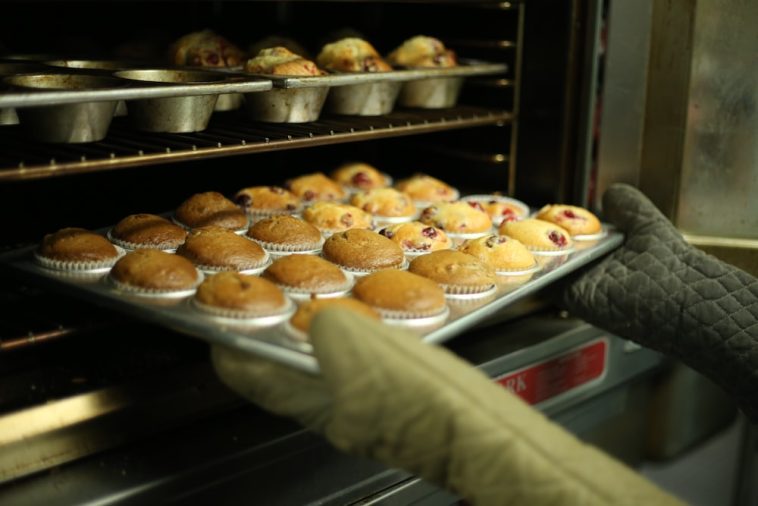Introduction.
If you’re thinking about diving into the world of food businesses, choosing the right niche can make all the difference between success and struggling to keep your business afloat.
The food industry is massive, with billions of dollars spent annually on everything from snacks to fine dining.
But with so many options out there, how do you find a profitable niche that’s both sustainable and something you can truly get behind?
Picking the right food niche isn’t just about finding something trendy or “cool” — it’s about understanding consumer needs, identifying gaps in the market, and finding a space where your passion and expertise can thrive.
Whether you’re considering starting a food blog, launching a catering business, or opening a restaurant, the food niche you pick could shape your success.
This article will walk you through the process of selecting a profitable food niche that aligns with your skills, interests, and market demand.
We’ll cover the key factors to consider, examples of successful food niches, and provide practical tips to help you make an informed decision.
Let’s get started!
Why Choosing the Right Food Niche is So Important
The food industry is one of the most dynamic sectors in the world. According to a report by Statista, the global food and beverage market is expected to surpass $9 trillion by 2025.
While this presents tons of opportunities, it also means that competition is fierce. With so many options out there, it can be hard to stand out and find your place.
If you try to serve every type of food or appeal to everyone, you risk becoming just another face in the crowd.
But if you focus on a specific niche, you’ll have a better chance at reaching the right audience and building a loyal customer base.
Think about it — niche businesses are often better able to target the exact needs of their market, provide more specialized products or services, and stand out as experts in their field.
But how do you even begin to figure out which food niche to choose?
How Do I Choose a Profitable Food Niche?
1. Understanding the Demand.
The first thing to look at when selecting a food niche is the demand for it. There’s no point in offering something if people aren’t interested or willing to spend money on it. Market research is key here. You want to find niches that are growing and have long-term potential.
For example, plant-based foods have been on the rise for years. According to a report from Grand View Research, the global plant-based food market size was valued at $12.69 billion in 2022 and is expected to expand at a compound annual growth rate (CAGR) of 9.5% from 2023 to 2030.
This kind of data is valuable when evaluating the profitability of a niche. If you’re passionate about vegan food or sustainability, this could be a great area to dive into.
2. Identify Your Passion and Expertise.
While it’s important to choose a niche that has demand, it’s also crucial to consider your own interests and expertise. After all, you’ll be the one running the show, so it helps if you’re genuinely excited about what you’re doing.
Start by asking yourself:
- What kind of food do I love to cook or eat?
- Do I have any special knowledge or skills related to food (e.g., nutrition, cooking techniques, food photography)?
- Are there specific food trends I’m passionate about?
Your passion and expertise will not only make running your food business easier and more enjoyable but will also help you stand out as an authentic voice in your chosen niche.
3. Consider Trends, But Be Cautious of Fads.
Food trends come and go, but understanding the difference between a trend and a fad can help you make smarter choices.
Fads might generate buzz in the short term, but they often die out quickly and leave businesses scrambling to adapt.
Trends, on the other hand, are typically more sustainable and have a lasting impact. For example, the rise of gluten-free, keto, and organic food has been a long-term trend, not just a passing craze.
When choosing a food niche, consider what’s been gaining momentum over the last few years, and think about whether it’s a trend with long-term staying power.
You can also consider local food trends, which might be popular in specific regions but haven’t yet gone global. This might present an opportunity to jump on something before it becomes a mainstream trend.
4. Evaluate the Competition.
Another crucial factor in choosing a profitable food niche is evaluating the competition. The more saturated a niche is, the harder it might be to break through.
However, that doesn’t mean you should avoid competitive niches altogether. The key is finding a way to stand out — whether that’s through a unique product, better customer service, or a clever marketing strategy.
Take time to research other businesses in your chosen niche. What are they doing well? What can you do differently or better?
Understanding your competitors will help you carve out a space for your own business and avoid wasting time or resources in a market that’s already flooded.
5. Location, Location, Location.
Where you’re based can play a big role in the success of your food niche. Certain niches perform better in specific regions, depending on local tastes, needs, and demographics.
For example, offering gourmet tacos in a city like Los Angeles may be a huge hit, while the same business might struggle in a small town where Mexican food is less popular.
Do some research into your local market and figure out what types of food are in demand. If you’re planning to sell online, keep in mind that shipping costs can make a big difference, so choosing a niche that’s cost-effective to ship can also be important.
Examples of Profitable Food Niches
To give you a clearer idea of what might work, here are some profitable food niches that are doing well today:
- Healthy Snacks: With more people focusing on health and fitness, there’s a growing demand for nutritious, on-the-go snacks.
- Meal Prep and Subscription Boxes: Busy people are looking for convenient ways to eat healthy, leading to the rise of meal prep services and food delivery boxes.
- Specialty Diets: Vegan, keto, gluten-free, and paleo diets are all growing in popularity. Catering to these specific dietary needs can help you tap into a dedicated customer base.
- Ethnic Cuisine: People love exploring new tastes and flavors, which makes ethnic foods from regions like India, Thailand, or the Middle East very popular.
- Sustainable and Locally Sourced Foods: With increasing concern about sustainability, food niches focusing on locally sourced or eco-friendly products are gaining traction.
FAQs
Q: How do I know if my food niche is profitable?
A: Research is key. Look at market trends, consumer demands, and competitors. Platforms like Google Trends or Statista can give you insight into how popular certain food niches are. If you notice sustained growth and consumer interest, that’s a good sign.
Q: How much competition should I be worried about in a food niche?
A: A certain level of competition is normal and healthy. It means there’s demand. However, if the niche is oversaturated, you might need to get creative to stand out. Look for ways to differentiate yourself.
Q: Can I choose a niche based on my personal preferences alone?
A: Your interests are important, but don’t ignore market demand. A profitable niche should meet both your passion and consumer needs.
Conclusion
Choosing a profitable food niche is about balancing your passions with what people actually want and need.
It’s about finding that sweet spot where demand and interest intersect, while also considering the competition and your ability to stand out.
There’s no one-size-fits-all answer, but with some research and thoughtful planning, you can find a food niche that sets you up for long-term success.
So, which food niche do you think could be the perfect fit for your skills and interests?





GIPHY App Key not set. Please check settings